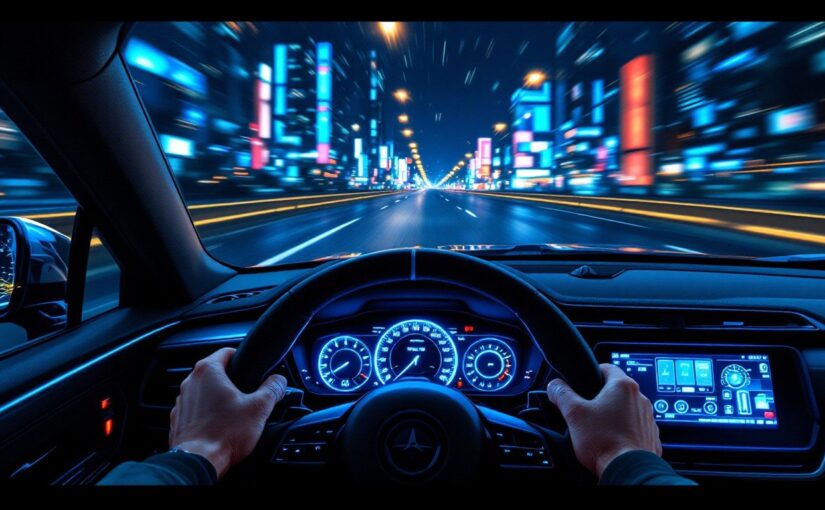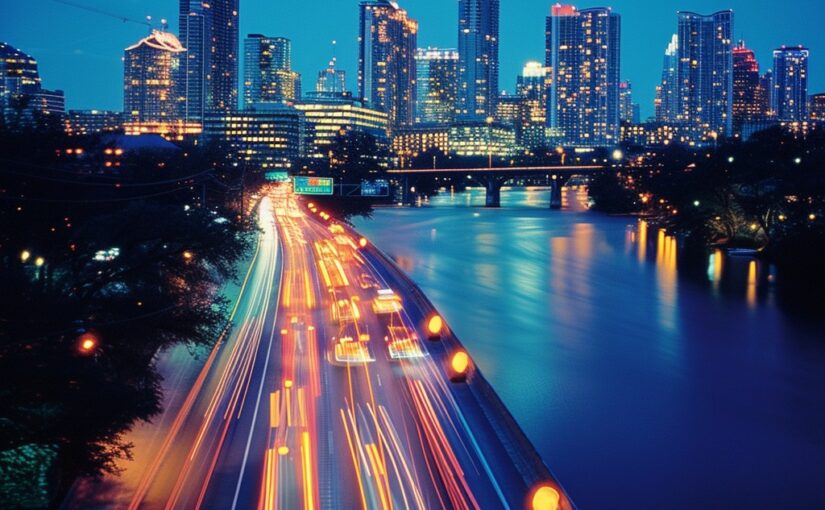A vinyl record stuck in an endless loop has the needle skipping over the same groove no matter how many times you lift it. Elon Musk’s narrative on Tesla’s Full Self-Driving (FSD) software follows a decade-long pattern of bold predictions that never quite reaches the crescendo. Since 2016, Musk has positioned FSD as the holy grail of autonomous driving, promising everything from coast-to-coast self-navigation to robotaxi empires. Yet, here we are in 2025, and Tesla’s vehicles still require human oversight for anything beyond basic highway assists. This is a tale of tech delays and a cautionary story about the perils of hype in AI-driven innovation, where overpromising can erode investor trust and invite regulatory backlash.
Continue reading Elon Musk: The Broken Record of Tesla’s Full Self-Driving PromisesCategory: Space & Autonomous Mobility
Navigating the Road Ahead: The Evolving World of Autonomous Vehicle Regulations
Autonomous vehicles promise to redefine how we move through the world, offering safer roads, reduced traffic congestion, and greater accessibility for all. Yet, as these self-driving cars edge closer to everyday use, the absence of unified rules could stall progress or invite chaos. Clear regulations are essential to balance innovation with public safety, foster market readiness, and build consumer trust in this transformative technology. Without them, the dream of a driverless future risks veering off course, leaving innovators uncertain and the public wary. This article explores the current regulatory landscape and peers into what lies ahead, drawing on global examples to illuminate the path forward.
Continue reading Navigating the Road Ahead: The Evolving World of Autonomous Vehicle RegulationsSF Neighborhood’s Robot Roadblock: Residents Fight Back Against Wayward Self-Driving Swarm
Sunlight filters through the eucalyptus trees lining Oakwood Street, a narrow lane in San Francisco’s Noe Valley neighborhood where families once strolled with dogs and kids on scooters. Now, the air hums with the whir of electric motors as a procession of self-driving vehicles idles bumper to bumper, their sensors blinking like confused eyes. Residents peer from windows, hands on hips, while one woman waves her arms futilely at a Waymo van that edges forward then stops again. The once-peaceful block has turned into a gridlocked puzzle, with autonomous cars circling endlessly and blocking driveways for hours.
Continue reading SF Neighborhood’s Robot Roadblock: Residents Fight Back Against Wayward Self-Driving SwarmRobotaxi Reality Check: Federal Scrutiny Grows, Raising Cost of Safety Validation and Delaying Revenue Ramp Assumptions
A sleek electric vehicle pulls up to your curb, ready to whisk you across the city without a human at the wheel. No small talk, no erratic lane changes from a tired driver, just smooth, efficient travel. This vision of robotaxis has captivated tech enthusiasts and investors for years, promising to upend urban transportation. Yet, as federal regulators tighten their grip, the dream faces harsh realities that could stretch timelines and inflate costs far beyond initial forecasts.
Continue reading Robotaxi Reality Check: Federal Scrutiny Grows, Raising Cost of Safety Validation and Delaying Revenue Ramp AssumptionsTesla’s Full Self-Driving U-turn: From Autonomous Dream to Supervised Reality
Tesla’s redefinition of “Full Self-Driving” marks one of the most consequential pivots in automotive tech this decade. The company’s retreat from its bold promise of cars that drive themselves with no human oversight is sending shockwaves through the industry. This article explores how Tesla’s FSD pledge has evolved, why it changed, and what it means for the future of driverless mobility. We will cover Elon Musk’s visionary pronouncements and the hard realities now facing Tesla, its customers, and the rapidly maturing autonomous vehicle industry.
Continue reading Tesla’s Full Self-Driving U-turn: From Autonomous Dream to Supervised RealitySpaceX Dominance, Launch Oligopoly Fears, and Space Market Risks: Is the Space Economy Too Fragile?
SpaceX’s star has never shone brighter than in 2025. With launch pads firing almost every other day, a fleet of reusable rockets, and the swelling tide of Starlink satellites circling Earth, the company founded by Elon Musk holds the reins of global space access. Yet, behind the headlines of record-shattering launch cadence and unrivaled cost efficiency, a new anxiety is rippling through the space industry. What happens when one company becomes the de facto gatekeeper to orbit and beyond? As governments, tech giants, and startups bet their ambitions on SpaceX’s reliability, questions of market fragility, competition, and long-term sustainability loom large.
Continue reading SpaceX Dominance, Launch Oligopoly Fears, and Space Market Risks: Is the Space Economy Too Fragile?The 2025 Space Finance Squeeze: Who Survives the Great Divergence?
The space industry is entering 2025 with a sharp financial split: public money is rising while private venture funding remains well below its 2021 peak, creating a squeeze that is reshaping who holds power and who can survive the next 12 to 24 months. Private investment fell from roughly $18 billion in 2021 to about $5.9 billion in 2024, even as global government space budgets climbed to approximately $135 billion, with defense now the majority of public spend, a pivot that is redefining winners and losers across launch, Earth observation, and satellite communications. The question looming over founders and financiers alike is simple and urgent: who will thrive in the new space economy, and who will consolidate or fold under pressure ?
Continue reading The 2025 Space Finance Squeeze: Who Survives the Great Divergence?
